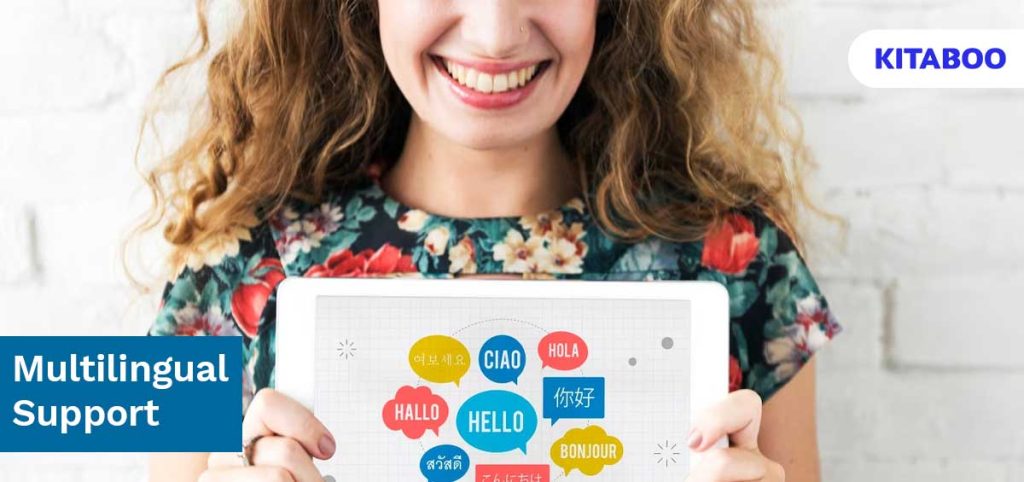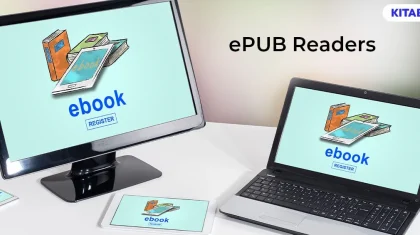
How Can K12 Publishers Address Multilingual Education?
Summarize this blog with your favorite AI:
Once considered a niche concern, multilingualism is now a pivotal element of modern education. As K12 publishers strive to meet the ever-growing demand for inclusive learning experiences, they must grapple with the complex challenge of providing multilingual support.
From urban classrooms to rural communities, the need to bridge linguistic gaps has never been more crucial. Enter KITABOO, a leading digital publishing and learning platform that understands the evolving dynamics of education.
In this blog, we will explore the transformative power of multilingual education and how K12 publishers can navigate this dynamic terrain. We’ll delve into the strategies, tools, and technologies that cater to student’s diverse needs and align with the mission of publishers like KITABOO, who are committed to shaping the future of learning.
Table of Contents
I. What is the Need to Address Multilingual Education by K12 Publishers?
II. 8 Ways K12 Publishers Can Address Multilingual Education to Learners
- Bilingual eBooks and Interactive Content
- Language-Agnostic Learning Platforms
- Automated Translation Tools
- Multilingual Audio Resources
- Adaptive Language Learning Paths
- Culturally Diverse Content
- Data-Driven Insights and Analytics
- Teacher Training and Professional Development
III. Advantages of Providing Multilingual Support to Learners
- Multilingual Education Promotes Inclusivity and Equity
- Multilingualism Caters to Language Diversity
- Multilingual Support Enhances Learning Outcomes
- Prepares Students for a Globalized World
- Multilingual Education Fosters Cultural Awareness
- Helps Meet Educational Standards
IV. Final Thoughts
What is the Need to Address Multilingual Education by K12 Publishers?
In our interconnected world, proficiency in multiple languages has become an invaluable skill. Multilingual education equips students with the linguistic and cultural knowledge they need to thrive as global citizens, enabling them to communicate and collaborate effectively across borders.
Furthermore, multiple researchers have consistently shown that when students can access educational content in their native language, they perform better academically. Multilingual support not only enhances comprehension but also increases student engagement, leading to improved learning outcomes.
From a business perspective, offering multilingual support allows publishers to tap into new markets and expand their reach, benefiting both students and their own growth.
In sum, addressing multilingual education is essential for K12 publishers as it aligns education with the needs of a diverse, interconnected world, promoting inclusivity and better learning outcomes.
8 Ways K12 Publishers Can Address Multilingual Education to Learners
In the quest for delivering effective multilingual support to learners, K12 publishers like KITABOO have adopted innovative strategies and harnessed cutting-edge tools.
Let’s delve into 8 specific ways through which they are making this vision a reality:
1. Bilingual eBooks and Interactive Content
K12 publishers are creating bilingual eBooks and interactive content that allow learners to toggle between languages seamlessly.
Tools like KITABOO’s eBook platform enable publishers to embed translations, audio narration, and interactive quizzes in multiple languages within a single digital resource.
2. Language-Agnostic Learning Platforms
To cater to students from various linguistic backgrounds, publishers are developing language-agnostic learning platforms.
These platforms, such as KITABOO’s, are designed to support multiple languages and scripts, providing a consistent user experience regardless of the learner’s native tongue.
3. Automated Translation Tools
Machine translation tools powered by AI are becoming increasingly sophisticated.
Publishers are integrating such tools into their platforms to translate content into multiple languages instantly. These translations can serve as a quick reference for learners while maintaining the integrity of the original text.
4. Multilingual Audio Resources
To enhance comprehension, publishers are incorporating multilingual audio resources into their digital content.
These resources include audio books, pronunciation guides, and language-specific audio lessons. KITABOO’s platform, for instance, enables publishers to integrate audio support for diverse languages seamlessly.
Also Read: Creating DRM Protected eBooks
5. Adaptive Language Learning Paths
Personalization is key in multilingual education. K12 publishers are leveraging adaptive learning algorithms to tailor language learning paths based on individual proficiency levels.
With tools like KITABOO’s adaptive learning engine, students receive targeted content and exercises to accelerate their language acquisition.
6. Culturally Diverse Content
Recognizing that language is intertwined with culture, publishers are curating culturally diverse content. This approach not only helps learners grasp the linguistic nuances but also fosters a deeper understanding of the associated cultures.
KITABOO’s content repository includes a wide array of culturally relevant materials to support learners on their multilingual journey.
7. Data-Driven Insights and Analytics
K12 publishers are leveraging data-driven insights to identify language proficiency gaps and tailor learning experiences accordingly.
Tools like KITABOO’s analytics dashboards provide educators with a granular view of each student’s language learning journey, enabling them to make informed decisions and adjustments to their teaching methods.
8. Teacher Training and Professional Development
Supporting educators is paramount to the success of multilingual education.
Publishers are partnering with educational institutions to offer teacher training programs specifically focused on multilingual pedagogy. These programs equip educators with the tools and strategies needed to teach in multilingual classrooms effectively.
Advantages of Providing Multilingual Support to Learners
In an era characterized by globalization and cultural diversity, the decision for K-12 publishers to provide multilingual support to learners is not just a choice; it’s a necessity.
Here are the top advantages of prioritizing multilingual education:
1. Multilingual Education Promotes Inclusivity and Equity
Education is a fundamental right, and every student deserves an equal opportunity to learn, regardless of their language proficiency.
By offering multilingual support, publishers promote inclusivity and help level the playing field for all learners, including those from linguistically diverse backgrounds.
2. Multilingualism Caters to Language Diversity
In today’s classrooms, students hail from a wide range of linguistic backgrounds.
Providing multilingual support acknowledges and respects this diversity, ensuring that educational resources are accessible and relevant to a broader audience.
3. Multilingual Support Enhances Learning Outcomes
Studies have shown that students tend to perform better academically when they can access learning materials in their native language. Multilingual support fosters better understanding and engagement, leading to improved learning outcomes.
4. Prepares Students for a Globalized World
In a globalized economy, proficiency in multiple languages is a valuable skill.
By offering multilingual education, publishers equip students with the linguistic skills and cultural awareness needed to thrive in an interconnected world.
5. Multilingual Education Fosters Cultural Awareness
Language is a gateway to understanding different cultures. Multilingual support exposes students to diverse perspectives, fostering cultural empathy and promoting a more inclusive society.
6. Helps Meet Educational Standards
Many educational standards and frameworks now emphasize the importance of multilingualism.
By aligning with these standards, K-12 publishers ensure that their materials remain relevant and compliant with evolving educational guidelines.
Also Read: 9 Trends in Education Technology That Will Have A Major Impact in 2023
Final Thoughts
By adopting the strategies above and utilizing tools like KITABOO’s digital textbook and learning platform, K12 publishers are successfully addressing the complexities of multilingual education.
They are not only breaking down language barriers but also paving the way for a more inclusive and enriched learning experience for students around the world. In doing so, they are not just facilitating language acquisition; they are empowering learners to embrace a world of knowledge in their unique voices.
Request a Demo today to learn more about KITABOO Digital Publishing and Education Platform.
Suggested Reads:
Discover how a mobile-first training platform can help your organization.
KITABOO is a cloud-based platform to create, deliver & track mobile-first interactive training content.



